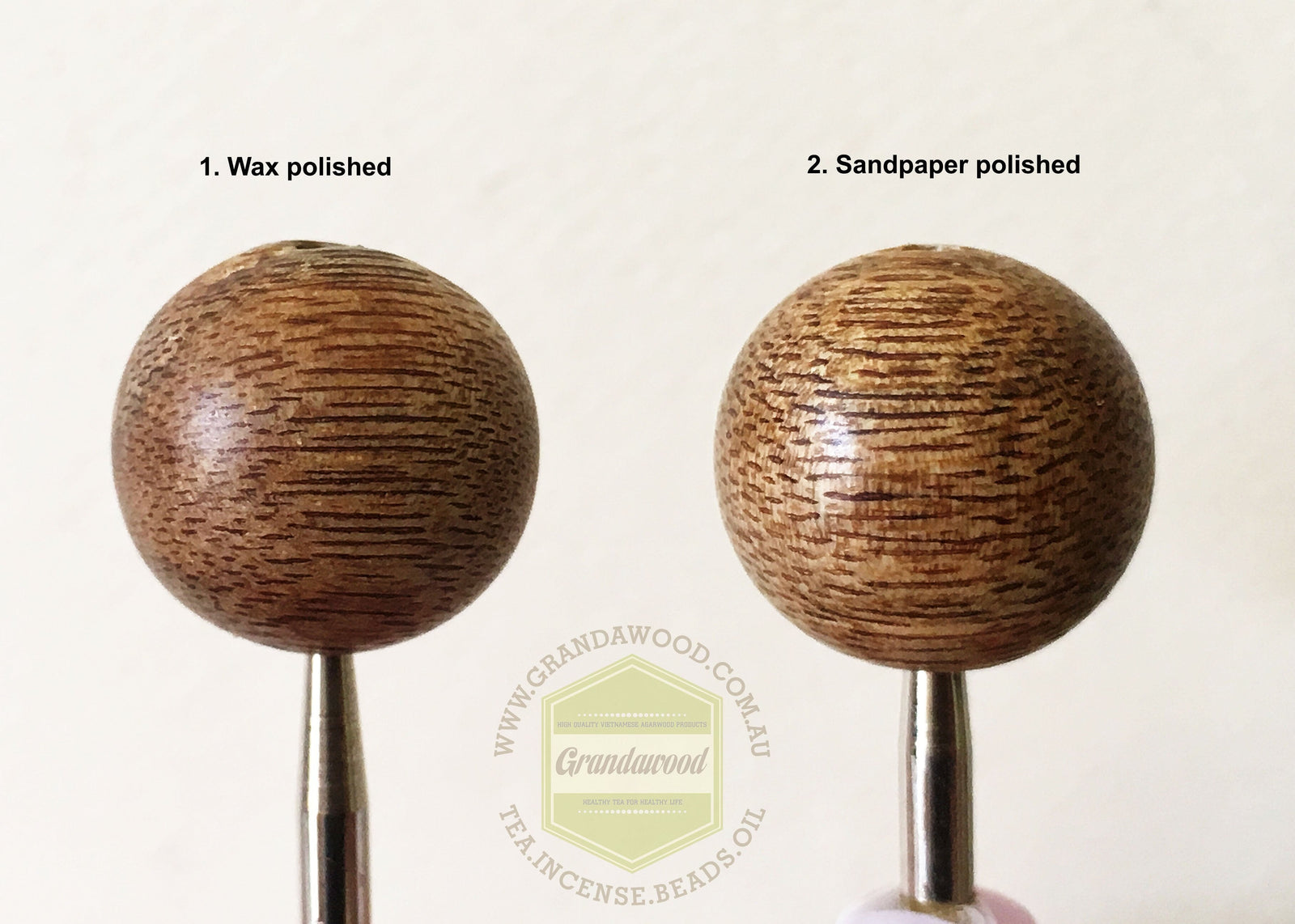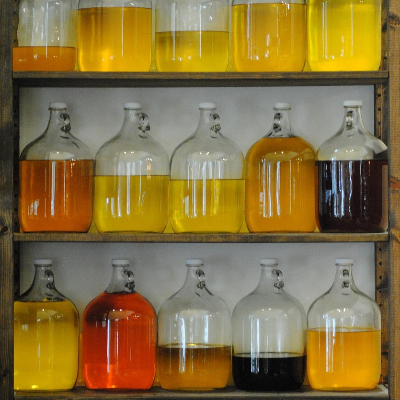Menu
-
-
F.A.Q
- How to identify genuine agarwood chip, natural or cultivated
- How to identify oil injection / absorption fake agarwood beads
- How to know if there are more than one oil in your oil
- How to make your wood bracelet or mala darker
- How to tell if an Agarwood bead sinks WITHOUT sinking it under water?
- How does back flow incense work and how do you burn it?
- Where to start if you don't know what agarwood is ?
- Why are you losing money if you buy seeds and plants?
- Which agarwood incense should I choose?
- Frequently Asked Questions
- Agarwood Related Articles
- Shipping
-
SHOP - Agarwood
-
SHOP - Other Fragrant Wood
-
SHOP - Incense Holder and Burner
-
- FREE Oud Oil guide
- Testimonials
- "Why did you buy this?"
- Contact us
- About Us
- +61430284329
- Login
-
English


How to maintain your Agarwood beads?
September 21, 2017 7 min read
Table of Contents:[hide]
Agarwood is an aromatic, resinous portion of the Aquilaria tree. It is non-timber, light texture, and the wood is diffuse-porous. Agarwood beads are precious, lightweight, soft and absorb liquid; they require the best care to maintain their look and aroma. Agarwood beads can be made from wild or cultivated agarwood, with the latter being known for its positive energy and stress-reducing properties. There are currently two methods of polishing: waxing and sanding.

Photo 1- Wax polished bead and sandpaper-polished bead
Understanding Agarwood Beads
Agarwood beads are crafted from agarwood, a highly prized and fragrant wood known for its distinctive fragrance and spiritual properties. Agarwood forms in the heartwood of Aquilaria trees when they become infected with a specific type of mold, resulting in a dark, aromatic resin. This resin is the most valuable part of the agarwood, responsible for its unique fragrance and beneficial properties. Agarwood beads are often used in meditation, prayer, and aromatherapy, believed to possess spiritual and emotional healing properties. The soothing scent of genuine agarwood can help reduce stress and promote positive energy, making these beads a cherished item for many.
The Wax Polishing Method with Dry Cloth

Agarwood bead makers have been using “The Wax Polishing Method” for Vietnam Agarwood beads making. After shaping and buffing, skilled workers slightly wax to smooth the agarwood bead surface. The price of agarwood beads can vary significantly based on the polishing method used, with wax-polished beads often being more affordable due to the simpler process.
This wax layer is super thin that it will not affect the aroma and will be easily worn off since the first time of usage, especially when the weather is hot and humid. You may feel shocked to see the actual natural colour of your beads. Calm down; it is normal. It is like when you have frizzy hair, got it managed by gel and after being washed, the hair is out of control again. The wax layer will make the beads 1 to 2 tones darker than the actual colour of the bead.
Wax polished beads are sensitive to water and sweat; it is inevitable and ubiquitous. You can blend out water or sweat marks on beads by rubbing the beads against the soft cloth for an instant fix. If it has too much damage, clean the beads regularly with a soft cloth and wear it daily to form the natural glossy layer. The white marks on the beads are sweat marks developed when you frequently wear your bracelet or 108 mala.

Photo 2- Sweat marks on worn beads
In short, you will find the worn beads losing their darkness after a week or two.
Don't worry; it was the coated wax that "fell" off.
Suppose you keep wearing these beads, whether bracelets or 108 malas; you will find the texture of these beads darker after several months. I have seen many customers having this result.
Sandpaper-polished Method

Agarwood-bead makers polish these beads with high grit sanding paper at high speed. This action will create heat.
The heat will melt the natural resin from the included phloem and sap in the beads and coat them evenly. The quality of the essential oil within the resin can also affect the final appearance and fragrance of the beads, with higher quality oils providing a clearer and more pleasant scent. The heat also creates a burning effect that will give the beads a beautiful glossy look and nice colour. In addition, when the resin melt, it makes a unique pattern for each bead. For example, see the below sandpaper polished beads.

The colour or pattern of the beads depends on the resin of the Agarwood bead. Beads polished by this method tend to be less sensitive to water and sweat. However, the polished layer is very fragile to sharp/ abrasive items. Long-term wear can help the issues, or you have the beads polished again. The scratches may not be visible for high-quality beads if the wood itself is dark enough to cover.

Photo 3- Cut beads from resinous Agarwood bead
The Elegance mala 6 mm- Wild Indonesia

Photo 4- Sandpaper polished resinous beads
The Elegance mala 6 mm- Wild Indonesia
Agarwood-bead makers will usually use the polished sandpaper method on Wild Agarwood beads because it looks "cooler" and "one of a kind."
Below is the summary table of the issues that an Agarwood-bead user may encounter:
|
Reasons |
Causes |
Damages and recovery |
|
Water |
Most of the beads should stay away from water; the less contact time, the better. Due to their porous characteristic, they will absorb the water. If you do not quickly dry them up, and they will crack. |
Bead is deformed and damaged permanently.
|
|
Sweat |
Sweat can strip off the wax layer on the bead reveal the natural colour of the bead. This is normal |
Using a soft cloth to re-polish the water spot and even out the colour of the bead and regain its shine.
Use a soft cloth to re-polish and clean up the beads from sweat residues that may clog the bead and form dirt. Wear the beads frequently, and they will darken naturally. |
|
Alcohol |
This potent substance dissolves the resin, removing the natural oil layer formed on the bead. |
Bead is damaged permanently, can be fixed by re-polished however, the original resinous layer has been removed so the colour would not be as similar in some cases. |
|
Perfumery |
Alcohol-related products
Fragrances in perfume will be absorbed into the beads and affect the natural aroma. |
Same as above The beads will have the "perfume" smell. If the perfume is oil-based. The appearance of the beads will have minimum impact. The main concern will be the aroma of the beads. It will take many months to get rid of the "perfume" smell. |
|
Oil and oil-based products |
Fragrances in lotion/ oil will affect the natural aroma of the beads.
Oil residue will clog on the bead. |
Long-term damage on the aroma
Need regular cleaning and polishing with a soft cloth, but as it is absorbed in the bead, there is no way to remove without damages. |
|
Sharp items |
The surface will be damaged when the beads are exposed to items that can cause cuts/ abrasions |
Buffing may remove permanent damage, light abrasive marks on the top layer but due to the softness of the wood, Agarwood beads can be cut deep into the wood part. |
Besides, the weather plays a significant role in affecting Agarwood beads; dry weather can make the unworn beads crack due to unevenly shrinkage, especially newly-created beads. It can be prevented by tightly wrapping the beads or store in a glass box with a small cup of water inside to balance the humidity. In high humid weather, the bead might develop moulds; you can store the bead in a zip bag with a moisture absorber. Those are just some tips to help you maintain the beautiful look of your precious Agarwood beads.
Handling and Storing Your Agarwood Beads
To ensure the longevity of your agarwood beads, it’s essential to handle and store them properly. Avoid exposing your agarwood beads to water or moisture, as this can cause damage and loss of fragrance. Remove your agarwood beads when showering, washing dishes, or engaging in activities that involve water. Store your agarwood beads in a cool, dry place away from direct sunlight, and avoid storing them in locations with strong odors to preserve their pleasant fragrance. Use a dry cloth to clean your agarwood beads, and steer clear of harsh chemicals or abrasive materials that could harm the wood.
Authenticating Your Agarwood Beads
With the increasing number of counterfeit agarwood beads on the market, it’s essential to authenticate your beads to ensure their genuineness. Genuine agarwood beads have a natural, fragrant wood smell, while counterfeit beads may have an unusual scent or no scent at all. Examine the appearance of the beads; genuine agarwood beads feature unique patterns with resin lines, whereas counterfeit beads often have a uniform color and pattern. Using a microscope or magnifier can help you inspect the beads more closely, as genuine agarwood beads display a natural and random pattern, unlike the uniformity seen in counterfeits.
Inspecting Your Agarwood Beads
Regularly inspecting your agarwood beads can help you identify any signs of damage or wear. Check the beads for any cracks or splits, and inspect the resin lines for signs of tampering. Use a dry cloth to clean the beads, avoiding harsh chemicals or abrasive materials. Pay attention to the weight of the beads; genuine agarwood beads have a distinctive weight, while counterfeit beads may feel lighter or heavier. Additionally, inspect the fibre of the beads, as genuine agarwood beads have a natural fibre, whereas counterfeit beads may contain synthetic fibres. Regular inspection and proper care will help maintain the beauty and fragrance of your agarwood beads for years to come.
Genuine agarwood bead maintenance summary
-
Avoid water; normal sweating is OK, but you need to use a dry cloth to clean the beads if you have excessive sweating. Forget about the sinking test if you want to maintain these beads properly. Like it or not, when wood meets water long enough, it will expand and crack sooner or later.
-
Keep body lotion or perfume away. When you wear your beads and apply perfume or lotion on your wrists, agarwood beads will absorb the aroma of your lotion and perfumes and smell like your lotion and perfume. If you don’t like your agarwood beads having the lotion or perfume smell, avoid wearing perfume and agarwood beads at the same place.
-
Keep your agarwood beads dry. Store your agarwood bracelet and mala in a zip bag with a moisture absorber when not in use. For agarwood bracelets, it is especially important to store them in a zip bag with a moisture absorber to prevent any damage from humidity.
-
Polish your beads. If you want your agarwood beads shiny, use a soft cloth to polish your beads. The more you polish, the shinier it becomes.
Leave a comment
Comments will be approved before showing up.
Also in News

What is Tasbih? The Deep Meaning of Subhan Allah and the Role of Prayer Beads
November 09, 2025 4 min read

